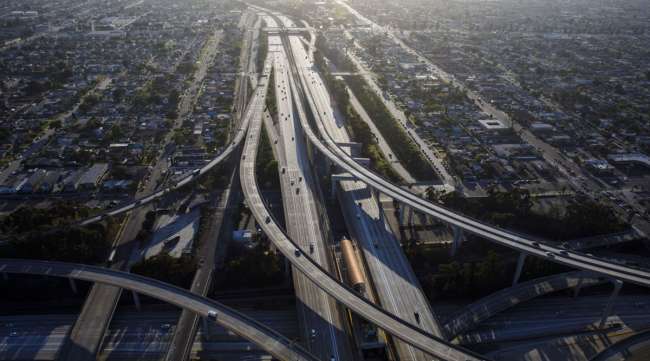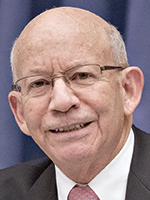Senior Reporter
FCC Reassigns Transportation Safety Spectrum

[Ensure you have all the info you need in these unprecedented times. Subscribe now.]
Despite pushback from transportation stakeholders and key policymakers on Capitol Hill, the Federal Communications Commission moved forward with its plan to reallocate some transportation safety spectrum for broadband uses.
The FCC on Nov. 18 voted to reassign a portion of the 5.9 GHz transportation safety band to allow use by unlicensed Wi-Fi content providers, an action the commission argued will promote wireless access. The move was meant to boost the economy during the pandemic era while continuing to ensure certain access for transportation safety purposes, regulators said.
“We have all made it clear that freeing up additional mid-band spectrum is critical to securing America’s leadership in wireless,” said FCC Commissioner Brendan Carr.
“By freeing up 45 MHz of this spectrum in the lower portion of this band, it will supersize WiFi — a technology so many of us are relying on like never before during this pandemic,” added FCC Commissioner Jessica Rosenworcel.
Specifically, the agency mandated the lower 45 MHz portion of the 5.9 GHz band to immediately serve unlicensed content. Intelligent transportation system services users have a year to vacate the lower end of the band.
According to the new rule, the remaining upper 30 MHz of the 5.9 GHz band will begin transitioning to the cellular vehicle-to-everything, or C-V2X, technology standard over the existing dedicated short-range communications, or DSRC, standard.
“C-V2X uses cellular protocols to provide direct communications between vehicles and obstacles like other vehicles, cyclists, pedestrians, and road workers, and to receive safety information from roadside transmitters,” according to the FCC. “C-V2X has gained momentum both domestically and internationally.”
Additionally, the agency adopted a further notice of proposed rulemaking containing certain rules for outdoor unlicensed operations. Also, the agency seeks comment on how to transition intelligent transportation system services in the band to C-V2X.
DOT Letter to FCC on 5.9 GH... by Transport Topics
Prior to the FCC’s meeting, the U.S. Department of Transportation called for revisiting the proposal. The department urged the agency to “return to working with the department, the auto and infrastructure industries, transportation safety experts, and other stakeholders through a collaborative and transparent process, perhaps a negotiated rulemaking, to develop a better, more sustainable solution for the 5.9 GHz safety band.”
On Capitol Hill, transportation leaders recently tapped the U.S. Government Accountability Office to review the safety implications stemming from dedicating a portion of the 5.9 GHz spectrum band for unlicensed purposes.

DeFazio
“It’s highly disappointing the FCC chose to look past multiple concerns raised over the past year,” said Rep. Peter DeFazio (D-Ore.), chairman of the Transportation and Infrastructure Committee, who, along with colleagues, repeatedly expressed concern. “By redistributing spectrum for corporate interests, the FCC jeopardizes ongoing efforts to modernize our transportation systems with emerging technologies that reduce congestion, cut carbon pollution, and, critically, make our streets safer for everyone.”
Rep. Sam Graves (R-Mo.), the transportation panel’s ranking member, added: “The FCC’s action will unnecessarily set back advancements, and delay the real-world application of innovations that can save lives, like connected vehicle technologies.”
Proponents of the existing transportation band insisted safety could be hindered as a result of the agency’s action. In 1999, the agency dedicated the 5.9 GHz spectrum band for vehicle safety technologies to enable communication for connected vehicles and upgraded infrastructure.
Stakeholders opposed to the FCC’s action included the American Association of State Highway and Transportation Officials. Jim Tymon, the group’s executive director, said, “Without the full 5.9 GHz spectrum available to use for connected vehicle technologies it will be significantly more difficult to eliminate the kinds of fatal vehicle crashes that contribute to more than 37,000 fatalities on America’s roadways each year, as well as the safe deployment of connected and automated vehicles.”
“In a time in which we are rightly focused on following science and data, it is inexplicable that the FCC is willfully disregarding the advice of experts,” Intelligent Transportation Society of America President and CEO Shailen Bhatt emphasized. “It is corporate interests that are cheering the reallocation of the safety spectrum away from the public interests.”
Want more news? Listen to today's daily briefing:
Subscribe: Apple Podcasts | Spotify | Amazon Alexa | Google Assistant | More




